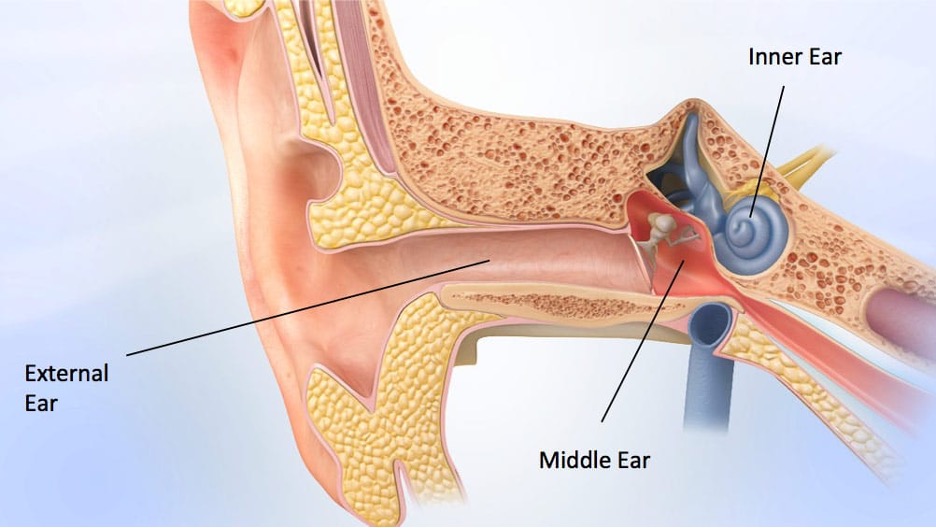
Normal Ear Functions
Hearing is a sense that allows people to understand one another. From inanimate sounds to special conversations, hearing helps to foster our relationships. The entire hearing system is complex but can be simplified into the following functions;
- Radar shaped ear captures sound in the air and sends it down the canal to the ear drum.
- The sound waves vibrate the eardrum and the three bones on the backside of the eardrum start to move like pistons on a car.
- The three bones moving makes the inner ear fluid, or cochlea, to move.
- The hair cells in the cochlea bend from movement of the fluid in the inner ear. The hair cells eventually convert the change movement of the fluid into electrical impulses.
- The electrical impulses are sent to the hearing (auditory) nerve and up to the brain, where they are interpreted as sound.
In summary, sound is transformed from pressure waves to mechanical energy. Then, this energy converts to electrochemical energy that the brain understands as speech, music, and nature.
The Outer Ear
The radar shaped outer ear is called the pinna, or auricle. The pinna, with its grooves and ridges, resonate sound down the ear canal to create a natural volume amplication for low frequency sounds that help us understand many consonant sounds of speech.
The ear canal, or external auditory meatus, has only a few layers of skin and fine hair, and has an abundant flow of blood. Ear wax known as cerumen accumulates there and acts as a protective barrier to the skin from bacteria and moisture. Earwax is normal but can become an issue when it blocks the ear canal.
The Middle Ear
The eardrum (tympanic membrane), is the dividing structure between the outer and middle ear. The eardrum is a thin membrane made up of three layers to increase its strength.
The auditory ossicles are the three tiny bones of the middle ear located directly behind the tympanic membrane. These three bones form a take mechanical vibrations received at the ear drum, increase the strength of these vibrations and transmit them into the cochlea of the inner ear.
The Eustachian tube is the middle ear’s air pressure equalizing system. The middle ear does not touch outside air except for the Eustachian tube which opens when you chew, swallow or yawn and when you intentionally open it while flying to equalize pressure in your ears.
The Inner Ear
The inner ear is an organ comprised of the cochlea and the semicircular canals is is located behind the bone of the skull on both sides of the head above and to the sides of the outer ear.
The cochlea is involved with hearing while the semicircular canals assist in maintaining balance while we move. The cochlea, snail-like in appearance and fluid-filled, is where nerves pickup sound for delivery to the brain. Thousands of hair cells in the cochlea detect the pitch of the pressure waves, convert them to chemicals, and then to electrical impulses for the brain to receive and interpret. The cochlea hair cells are arranged by frequency and encodes sounds from 20 Hz (low frequency) to 20,000 Hz (high frequency).
